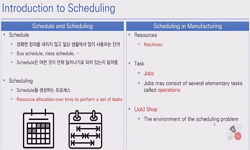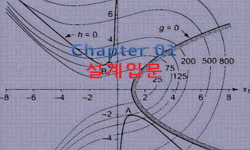This paper proposes an optimal trajectory generation method for biped robots for walking up-and-down stairs using a Real-Coded Genetic Algorithm (RCGA). The RCGA is most effective in minimizing the total consumption energy of a multi-dof biped robot. ...
http://chineseinput.net/에서 pinyin(병음)방식으로 중국어를 변환할 수 있습니다.
변환된 중국어를 복사하여 사용하시면 됩니다.
- 中文 을 입력하시려면 zhongwen을 입력하시고 space를누르시면됩니다.
- 北京 을 입력하시려면 beijing을 입력하시고 space를 누르시면 됩니다.
https://www.riss.kr/link?id=A75910574
- 저자
- 발행기관
- 학술지명
- 권호사항
-
발행연도
2006
-
작성언어
English
- 주제어
-
등재정보
KCI등재,SCIE,SCOPUS
-
자료형태
학술저널
-
수록면
612-620(9쪽)
-
KCI 피인용횟수
8
- 제공처
- 소장기관
-
0
상세조회 -
0
다운로드
부가정보
다국어 초록 (Multilingual Abstract)
This paper proposes an optimal trajectory generation method for biped robots for walking up-and-down stairs using a Real-Coded Genetic Algorithm (RCGA). The RCGA is most effective in minimizing the total consumption energy of a multi-dof biped robot. Each joint angle trajectory is defined as a 4-th order polynomial of which the coefficients are chromosomes or design variables to approximate the walking gait. Constraints are divided into equalities and inequalities. First, equality constraints consist of initial conditions and repeatability conditions with respect to each joint angle and angular velocity at the start and end of a stride period. Next, inequality constraints include collision prevention conditions of a swing leg, singular prevention conditions, and stability conditions. The effectiveness of the proposed optimal trajectory is shown in computer simulations with a 6-dof biped robot model that consists of seven links in the sagittal plane. The optimal trajectory is more efficient than that generated by the Modified Gravity-Compensated Inverted Pendulum Mode (MGCIPM). And various trajectories generated by the proposed GA method are analyzed from the viewpoint of the consumption energy; walking on even ground, ascending stairs, and descending stairs.
목차 (Table of Contents)
- Abstract
- 1. Introduction
- 2. Dynamics of Biped Robot Model
- 3. Constraints
- 4. Genetic Algorithms for Optimization
- Abstract
- 1. Introduction
- 2. Dynamics of Biped Robot Model
- 3. Constraints
- 4. Genetic Algorithms for Optimization
- 5. Simulations
- 6. Conclusion
- Acknowledgments
- References
- Appendix A
참고문헌 (Reference)
1 "Sensor-based control of a nine-link biped" 9 (9): 83-98, 1990
2 "Robust Sliding-mode Control Applied to a 5-Link Biped Robot" 15 : 67-133, 1996
3 "Optimal Walking Trajectory Generation for a biped Robot Using Genetic Algorithm" 1456-1461, 1999
4 "Low Energy Cost Reference Trajectories for a Biped Robot" 1398-1404, 1998
5 "Genetic algorithms in engineering systems" 1997
6 "Genetic Algorithms and Their Applications" Kyo Woo Sa 2002
7 "Genetic Algorithm in Search" 1989
8 "Genetic Algorithm for Control Design of Biped Locomotion" 1315-1320, 1995
9 "Generation of An Optimal Gait Trajectory for Biped Robots Using A Genetic Algorithm" 47 (47): 715-721, 2004
10 "Biped Robot Walking Using Gravity-Compensated Inverted Pendulum Mode and Computed Torque Control" 3528-3533, 1998
1 "Sensor-based control of a nine-link biped" 9 (9): 83-98, 1990
2 "Robust Sliding-mode Control Applied to a 5-Link Biped Robot" 15 : 67-133, 1996
3 "Optimal Walking Trajectory Generation for a biped Robot Using Genetic Algorithm" 1456-1461, 1999
4 "Low Energy Cost Reference Trajectories for a Biped Robot" 1398-1404, 1998
5 "Genetic algorithms in engineering systems" 1997
6 "Genetic Algorithms and Their Applications" Kyo Woo Sa 2002
7 "Genetic Algorithm in Search" 1989
8 "Genetic Algorithm for Control Design of Biped Locomotion" 1315-1320, 1995
9 "Generation of An Optimal Gait Trajectory for Biped Robots Using A Genetic Algorithm" 47 (47): 715-721, 2004
10 "Biped Robot Walking Using Gravity-Compensated Inverted Pendulum Mode and Computed Torque Control" 3528-3533, 1998
11 "Ascending and Descending Stairs for a Biped Robot" 29 (29): 255-268, 1999
12 "An Order n Dynamic Simulator for a Humanoid Robot with a Virtual Spring-Damper Contact Model" 31-36, 2003
13 "Accuracy Analysis of Optimal Trajectory Planning Methods Based on Function Approximation for a Four-DOF Biped Walking Model" 19 (19): 452-460, 2005
동일학술지(권/호) 다른 논문
-
- 대한기계학회
- Yon-Sang Cho
- 2006
- KCI등재,SCIE,SCOPUS
-
Neural Robust Control for Perturbed Crane Systems
- 대한기계학회
- Hyun Cheol Cho
- 2006
- KCI등재,SCIE,SCOPUS
-
Trajectory Generation and Dynamic Control of Planar Biped Robots With Curved Soles
- 대한기계학회
- Je Sung Yeon
- 2006
- KCI등재,SCIE,SCOPUS
-
Deformation Analysis of Micro-Sized Material Using Strain Gradient Plasticity
- 대한기계학회
- S. M. Byon
- 2006
- KCI등재,SCIE,SCOPUS
분석정보
인용정보 인용지수 설명보기
학술지 이력
| 연월일 | 이력구분 | 이력상세 | 등재구분 |
|---|---|---|---|
| 2023 | 평가예정 | 해외DB학술지평가 신청대상 (해외등재 학술지 평가) | |
| 2020-01-01 | 평가 | 등재학술지 유지 (해외등재 학술지 평가) |  |
| 2012-11-05 | 학술지명변경 | 한글명 : 대한기계학회 영문 논문집 -> Journal of Mechanical Science and Technology |  |
| 2010-01-01 | 평가 | 등재학술지 유지 (등재유지) |  |
| 2008-01-01 | 평가 | 등재학술지 유지 (등재유지) |  |
| 2006-01-19 | 학술지명변경 | 한글명 : KSME International Journal -> 대한기계학회 영문 논문집외국어명 : KSME International Journal -> Journal of Mechanical Science and Technology |  |
| 2006-01-01 | 평가 | 등재학술지 유지 (등재유지) |  |
| 2004-01-01 | 평가 | 등재학술지 유지 (등재유지) |  |
| 2001-01-01 | 평가 | 등재학술지 선정 (등재후보2차) |  |
| 1998-07-01 | 평가 | 등재후보학술지 선정 (신규평가) |  |
학술지 인용정보
| 기준연도 | WOS-KCI 통합IF(2년) | KCIF(2년) | KCIF(3년) |
|---|---|---|---|
| 2016 | 1.04 | 0.51 | 0.84 |
| KCIF(4년) | KCIF(5년) | 중심성지수(3년) | 즉시성지수 |
| 0.74 | 0.66 | 0.369 | 0.12 |






 DBpia
DBpia







